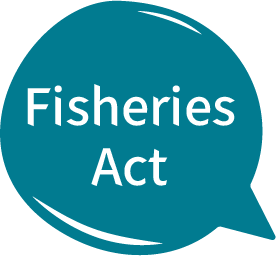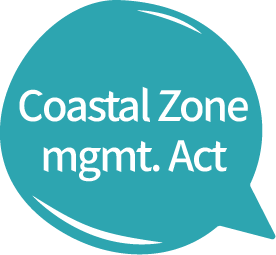Pangcah people living on the coast always dub the ocean “our refrigerator.” We feel very at home in the ocean. As the concept of “nation” emerged, however, the enactment of regulations has intervened how we use the ocean. “Our refrigerator” has hence become so distant and inaccessible because we, who are afraid of unconsciously breaking laws, keep our distance from it.
The indigenous peoples living along the coast rely on the oceans not only for gathering food, but also passing down their heritage. Take the Makota’ay Community in Fongbin Township in Hualien County as an example. Their religious belief in the God of Sea drives the villagers to be grateful for the fishery resources. In the interaction of human with nature and the supernatural, what oceans bring about are not only limited to material resources, but also the bond that links people, and so become a crucial locus for social relationships.
As the government has continuously enacted regulations pertinent to oceans, how indigenous peoples rely on the sea has been gradually restricted. We have to stay alert while we go fishing. We look back to the shore from time to time trying to check if coast guards are around, as if we are teetering on the brink of law violation. To make things worse, drowning incidents resulting from marine recreation have been exacerbated by the mass media, and oceans hence have been labelled “dangerous,” “frightening,” and “unsafe.” Oceans have then become unapproachable; our environment has become distant.
For now, national laws relevant to indigenous peoples’ use of oceans include “Coastal Zone Management Act” and “Fisheries Act,” from which a myriad of branch laws result, bringing far-reaching impacts to indigenous peoples. These two acts will be described further in the article. Other regulations such as “Wildlife Conservation Act,” which governs the species of fish approved for fish catch, and the “Laws of Ships,” which manages ship registration and entry/exit of the border, also affect the extent to which indigenous peoples rely on oceans, but the intervention is less prevailing.
 The “Fisheries Act” as the principal law governing fishery activity extends over an extensive area of matters including the creation of fishing rights, the practice of fishing, conservation and use of fishery, and relevant penalties. Among most decrees, indigenous peoples are hit hard the most by this act.
The “Fisheries Act” as the principal law governing fishery activity extends over an extensive area of matters including the creation of fishing rights, the practice of fishing, conservation and use of fishery, and relevant penalties. Among most decrees, indigenous peoples are hit hard the most by this act.
Focus of the Act:
•Fishing licenses: fishery operators shall obtain fishing licenses approved by competent authorities.
•Creation of fishing rights: only fishermen’s associations or fisheries production cooperatives are qualified for exclusive fishing rights. To exercise fishery access privilege, it is imperative to join either organisation in question.
•Marine and fishery conservation zone: when appropriate, competent authorities can establish conservation zones to regulate conservation targets and fishing gear, fishing methods, fishing areas, and fishing periods.
•Restrictions: fishing with poison, dynamite, or electric charges is prohibited.
Issues to be Discussed:
•Restrictions on fishing vessels
In the past, a large number of indigenous peoples went fishing on fishing vessels or bamboo rafts, which had been built by themselves. Examples are fishing nets made up of hemp twine by Kavalan and Pangcah people along the east coast and the planked, wooden fishing boats built by Tao people on Orchid Island to catch flying fish. In accordance with the present regulations, however, to fish on fishing boats requires membership of a fishermen’s association. Whether or not a fishing vessel has to be registered also depends on its operation, not to mention the qualification of crew members. Endless red tape has gradually turned fishing on fishing boats too specialised.
•The repercussions of the establishment of marine and fishery conservation zones
The Fisheries Act stipulates that competent authorities can set up conservation zones, but this decree does not include public participation; nor does it specify the need to obtain consent from indigenous peoples. For instance, a conservation zone has been established in the vicinity of the Makota’ay Community’s fishing area. Although only lobsters and Taiwan abalone are targeted for conservation, which is recognised by the villagers, the real culprit that puts marine creatures in peril is, in effect, large-scale commercial fishing. Therefore, comprehensive control and management, instead of limitation on single species, is what really matters.
 Since its enactment in 2015, the “Coastal Zone Management Act” has become the most significant law on managing spaces, such as Taiwan’s coastal and offshore areas. This act aims to, under global climate change, implement integrated coastal zone management including maintenance of natural systems and prevention of coastal disasters; in other words, the government intends to prevent the natural environment in the coastal areas from damage, and at the same time ensure the safety of the residents with spatial control measures.
Since its enactment in 2015, the “Coastal Zone Management Act” has become the most significant law on managing spaces, such as Taiwan’s coastal and offshore areas. This act aims to, under global climate change, implement integrated coastal zone management including maintenance of natural systems and prevention of coastal disasters; in other words, the government intends to prevent the natural environment in the coastal areas from damage, and at the same time ensure the safety of the residents with spatial control measures.
Focus of the Act:
•Coastal area planning: coasts are divided into conservation and protection zones, with the previous designated to protect the environment and the latter to prevent coastal disasters.
•Addition of regulations involving indigenous peoples: if the coastal conservation plan involves restricting indigenous peoples from using their land, their consent has to be acquired.
•Limit on coastal development: approval shall be applied for development projects reaching a certain scale in specific zones pursuant to this act.
Issues to be Discussed:
Various cities and counties have continuously announced first-grade coastal conservation zones and the coastal protection zones, yet pertinent rules and branch laws have not been finalised. So far, the coastal areas in Hualien and Taitung have fallen under the category of shore land areas; though whether or not they will be affected remains unclear, the enactment of the Coastal Zone Management Act adds an “extra layer of protection” to their lands and environment since large-scale development projects are subject to review. To a certain extent, the act helps indigenous communities safeguard their land.
Modern-Day Ocean Issues Faced by Indigenous Peoples
Although national laws on restricting indigenous peoples from using the oceans are not as harsh as those on hunting in mountain areas, resource depletion poses a far more serious threat with regulations on indigenous peoples. Indigenous peoples living close to the coasts need to deal with more clashes with fishery operators, tourism operators, and large-scale development contractors. As a consequence, it is crucial that we take a step back and think about how to solve these issues.
1.Lack of Fishery Resources
Overfishing stemming from the development of the fishery economy is ubiquitous in oceans around the world. Environmentalists point an accusing finger at indigenous peoples, who fish with spearguns, over damaging the environment, causing tensions between the two, but these environmental issues remain unsolved.
The clashes of this sort cannot be resolved simply with governmental order. You can think about what we can do under the circumstances to strike a balance between conflicting interests; namely fishermen’s lives, sustainability of indigenous cultures, and protection of natural systems.
2.Marine Debris
Floating marine debris along with microplastics that are not compostable spreads all over the world. For indigenous peoples who dub oceans their refrigerators, marine debris that accumulates along the coasts seems like keeping litter at home. This is not simply havoc on ecology, but home invasions.
For now, the world relies on civil groups organising the clean-up of beaches or oceans. However, there is still seafloor marine debris such as abandoned fishing nets, PE bottles, and plastic products getting stuck in reefs, which is literally a nightmare for indigenous peoples fishing under the water.
3.Marine Recreation
In recent years, more people have started to take part in marine recreational activities ranging from early-day whale watching, sea fishing, snorkelling, and diving to recently popular jet-skiing, stand-up paddling, canoeing, surfing, etc. The number of people using the beach for leisure increases year on year.
In order to plan more space for new types of marine entertainment, tourism operators invade the oceans once used by the indigenous peoples for daily life. Fish escape to other places as their habitats are disturbed by tourists, turning up in hordes. This development changes the original ecological systems and creates conflicts between villagers and operators of aquatic tourism.
The national policies of earlier days forced indigenous peoples to stay away from sea, which then became available for fishing. Thus, the connection between indigenous peoples and the oceans became disconnected. Nowadays, however, ocean ecology has experienced tremendous change, and problems resulting from the change cannot be dealt with by a single community or group. This is the time when the governmental authority is indispensable for restoring marine ecology and raising public awareness of protecting marine environment. When it comes to marine issues, the nation and communities have to work hand in hand. What are the possibilities for collaborations to defend this great blue homeland?





